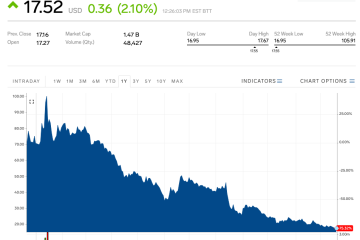Understanding Manitoba Hydro and Its Role in the Energy Sector

Introduction
Manitoba Hydro is the primary electric power and natural gas utility in Manitoba, Canada. Owned by the provincial government, the organization is a significant player in the country’s energy sector. As demand for sustainable energy sources increases, Manitoba Hydro’s role in producing and distributing clean hydroelectric power is becoming more important. This article will explore the recent developments, challenges, and future outlook for Manitoba Hydro, highlighting its relevance not only to local consumers but to broader environmental and economic issues.
Recent Developments
In 2023, Manitoba Hydro has continued to expand its efforts in renewable energy production, fueled by government initiatives focusing on sustainability. The utility has set ambitious goals aimed at reducing greenhouse gas emissions and increasing the percentage of electricity generated from hydroelectric sources. According to recent reports, Manitoba Hydro supplies over 96% of its electricity from renewable sources, predominantly hydroelectricity, making it a leader in clean energy.
The company is also engaging in various projects to meet the growing demands of both residential and commercial consumers. The Bipole III transmission project, completed in recent years, has improved the reliability of electricity supply across major urban centres and northern communities. Additionally, Manitoba Hydro is working on expanding its services to Indigenous communities, collaborating to ensure equitable access to energy resources.
Challenges Ahead
Despite its successes, Manitoba Hydro faces several challenges. Financial sustainability remains a significant issue, with the utility carrying a heavy debt load partly due to past large-scale infrastructure projects. In 2022, the Manitoba Public Utilities Board approved a rate increase, intended to help mitigate some of the financial strain, but it drew criticism from consumer advocacy groups who express concern about the impact on low-income households.
Moreover, climate change poses a risk to the reliability of the hydroelectric generation model, as predicted shifts in precipitation patterns could affect water levels in rivers and lakes that feed the hydro dams. The company has acknowledged these challenges and is investing in advanced predictive technologies to better manage hydrology risks.
Conclusion
As Manitoba Hydro navigates through its current landscape, the importance of this utility in providing energy solutions cannot be overstated. Its commitment to renewable energy not only contributes to the provincial and national goals of reducing carbon footprints but also plays a vital role in ensuring energy security for future generations. Stakeholders, including consumers, businesses, and policymakers, must stay informed about Manitoba Hydro’s decisions and initiatives, as they will have lasting implications on the province’s economic health and environmental stewardship. The future of Manitoba Hydro appears to be directed towards a more sustainable and engaging approach with communities, ensuring that it remains a cornerstone of Manitoba’s energy supply.









